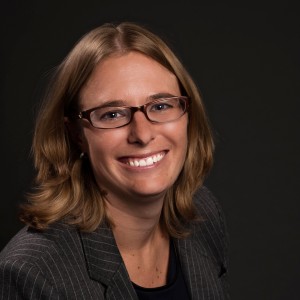Emily Vraga, Ph.D.
ekvraga@umn.edu
University of Minnesota

Phone: 6087723391
Address: 338 Murphy Hall, 206 Church St SE
City: Minneapolis, Minnesota - 55455
Country: United States
Research Interests
Political Communication
Research Methods & Research Design
Political Parties and Interest Groups
Health Politics and Policy
Misinformation
Social Media
Civic Literacy
Countries of Interest
United States
Publications:
Journal Articles:
This study tests whether the number (1 vs. 2) and the source (another user vs. the Centers for Disease Control and Prevention [CDC]) of corrective responses affect successful reduction of misperceptions. Using an experimental design, our results suggest that while a single correction from another user did not reduce misperceptions, the CDC on its own could correct misinformation. Corrections were more effective among those higher in initial misperceptions. Notably, organizational credibility was not reduced when correcting misinformation, making this a low-cost behavior for public health organizations. We recommend that expert organizations like the CDC immediately and personally rebut misinformation about health issues on social media.
With growing concern over a “post-truth” world rife with “fake news,” we agree that more needs to be done to develop novel techniques to define, measure, target, and correct misinformation when it occurs. We outline four points. First, we examine how much trust in core institutions has declined and whether such institutions can serve as sources of corrective information. Second, we consider the evidence for and against ideological differences in susceptibility to misinformation. We follow this analysis by elaborating on two of the proposed solutions offered by Lewandowsky et al. (2017) to address misinformation at a societal level. We discuss whether media literacy and civic education can serve as a potential solution to a fake- news crisis, and we explore potential pitfalls of this approach. Finally, we expand on their main suggestion that technocognition approaches are best situated to solve this issue.
Purpose Social networking sites (SNS) increasingly serve as a source of political content for Americans. The purpose of this paper is to clarify the relationships between types of political content exposure, especially congruent vs incongruent content, and its effects on political expression and participation. This study pays special attention to whether these relationships differ depending on whether an individual affiliates with the Republican or Democratic party. Design/methodology/approach This study uses a representative national sample to examine the relationships among exposure to congruent vs incongruent political content via SNS, political expression, and political participation. This study also tests whether these relationships are consistent for Democrats vs Republicans. Findings The results suggest the effects of political content exposure on political expression on SNS depend on how many friends post about politics, as well as whether that content is congruent or incongruent with one’s political beliefs. Moreover, the relationship between exposure to congruent vs incongruent content, political expression, and political participation differs for Republicans and Democrats. Originality/value This study highlights the need for researchers to take more care in distinguishing the type of and the audience for political content exposure via social media websites. Further, if the relationships between seeing political content via social media and acting upon such content – either through posting behaviors or participatory activities – differs by political group, it raises the potential for disparities in democratic engagement.
Media Appearances:
Newspaper Quotes:
“They tend to be people who get a lot of engagement, people who bump them up,” Emily Vraga, a professor at George Mason University who studies media and misinformation, told The Associated Press. And celebrities tend to have many followers who amplify the effect. “Other celebrities follow celebrities, journalists follow celebrities, they tap into much more influential pools than most people.” It doesn’t even entirely matter that everyone knows a star is no expert on a subject. “We like to think that people can judge credibility, but people who are attractive are seen as more credible, people who are popular are more likely to be seen as credible,” Vraga said. “They are tweeting to people who are likely to believe them.”
Emily Vraga, a political communications professor at George Mason University, has in the past conducted research showing that the “related articles” approach is effective at correcting misinformation on Facebook. The difference, she said, is leading a horse to water vs. forcing its head in. “‘Disputed’ inherently tells us there’s conflict, that there are people fighting over something, and that kind of raises our hackles, our defenses if you will,” she said, “whereas just providing people more information could potentially get around that at least to some extent.”
Blog Posts:
Brief response regarding best practices in addressing misinformation on social media.
While social media can be a great source of information and insight, it is also awash with misinformation. How can social media users combat this? In new research which focuses on health information, Emily Vraga finds that single tweets by social media users are ineffective at correcting false information, but they can be effective if they are followed by a response from an expert organization which has earned the public’s trust, such as the Centers for Disease Control.